Laura Knight in 5 Paintings: Capturing the Quotidian
An official war artist and the first woman to be made a dame of the British Empire, Laura Knight reached the top of her profession with her...
Natalia Iacobelli 2 January 2025
17 May 2024 min Read
A prolific watercolorist living in 19th-century Europe, Emily Sargent created vibrant scenes with painterly virtuosity. Despite living in the shadow of her renowned older brother, John Singer Sargent, Emily was an accomplished artist in her own right. The Sargent siblings travelled together to a variety of destinations and could often be found painting side-by-side. But while her illustrious brother catapulted into fame, Emily did not seek recognition or attention. In fact, her artwork was presumed to be lost—until 1998, when a suitcase full of some 400 of her works was discovered in an attic in England.
Emily Sargent was born in Rome, Italy in 1857 to American expatriate parents who lived a cosmopolitan lifestyle, moving their family regularly throughout Europe multiple times a year. When she was four, Sargent sustained a spinal injury, which was followed by a period of prolonged immobility. Her posture would be affected for the rest of her days, preventing her from living independently.
Only one year apart in age, Emily and her brother John were close playmates and later artistic companions. Their mother, an artist herself, encouraged her children’s creative pursuits. However, as Emily Sargent grew older she was not granted the same access to artistic training as her brother due to limitations placed on women in 19th-century Europe. While John Singer Sargent went on to train in Florence and Paris, Emily Sargent was denied formal classes—but this didn’t stop her from pursuing her passion.
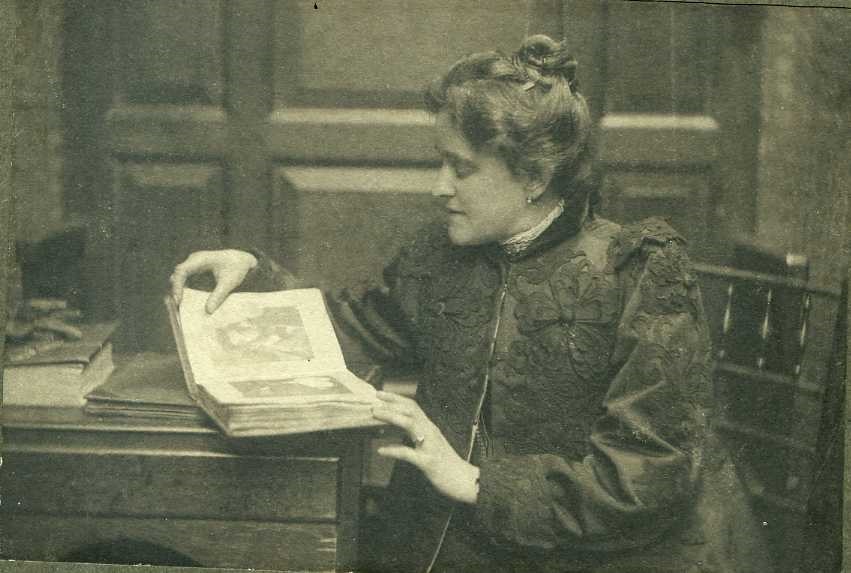
Emily Sargent at her desk. Sargent House Musem, Gloucester Massachusetts.
Glimpses of bazaars, majestic skylines, lush landscapes bathed in light—these are the colorful snapshots that comprise Sargent’s oeuvre. By immortalizing her extensive travels through her art, she provides a visual voyage to the faraway lands she visited. She evoked the atmospheres of Spain, Switzerland, Tunisia, Palestine, and Egypt, capturing the people and sites she encountered in what can be described as a diary in watercolors.
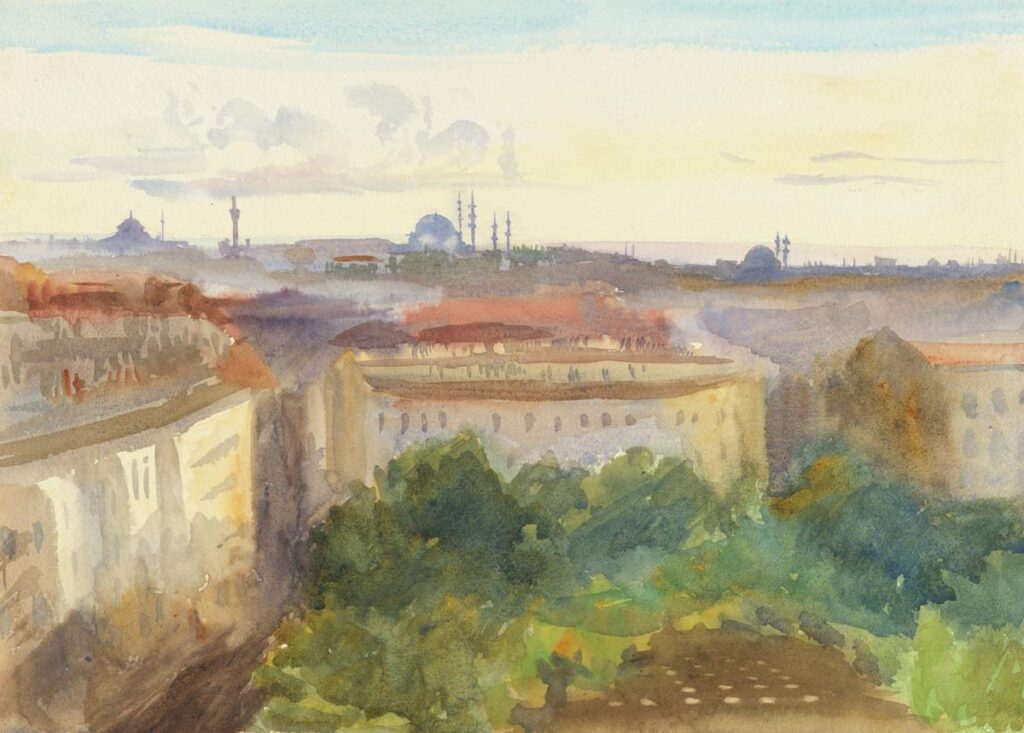
Emily Sargent, View of Constantinople, 1904. Tate Britain. Museum Website.
In 1889, Sargent began travelling with her brother. It was on these trips that she forged her own distinct style marked by broad strokes of watercolor applied to preliminary sketches in pencil. “Sketch everything and keep your curiosity fresh,” her brother would advise.1 She also received some training in London from American artist Julius Rolshoven (1858-1930) and English painter Charles Wellington Furse (1868-1904).
Her itinerant lifestyle provided her with a constant source of new subjects for landscapes and cityscapes.
In addition to her watercolors, Emily Sargent was an accomplished copyist. Her keen eye for detail allowed her to reproduce the Masters with great technical skill. In her lifetime, Sargent only publicly showed her work once in 1908, when she contributed several of these copies to a group exhibition at the Whitechapel Gallery in London.
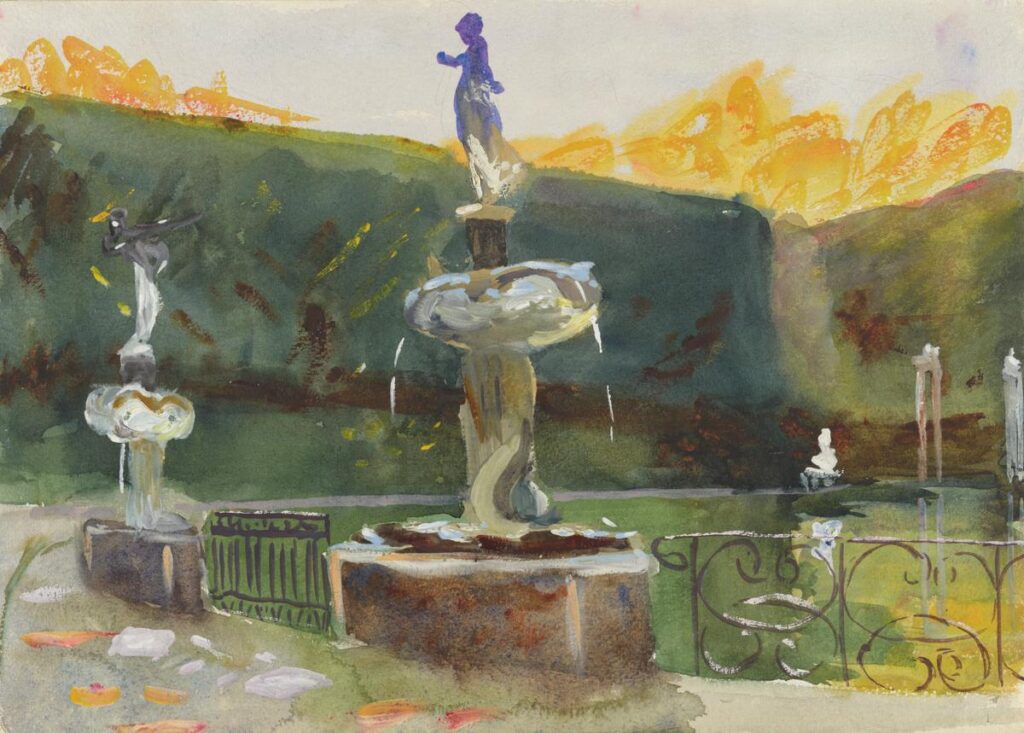
Emily Sargent, Boboli Gardens, 1908. Tate Britain. Museum Website.
A treasured glimpse of Sargent is offered through the works of her brother, in which she is often featured working en plein air. The siblings took sketching expeditions together each Autumn. In John Singer Sargent’s Miss Eliza Wedgewood and Miss Sargent Sketching from 1908, Emily Sargent is depicted at her easel.
Sargent lived a vibrant and creative existence and as the frequent traveling companion of her brother John, journeyed around the world.
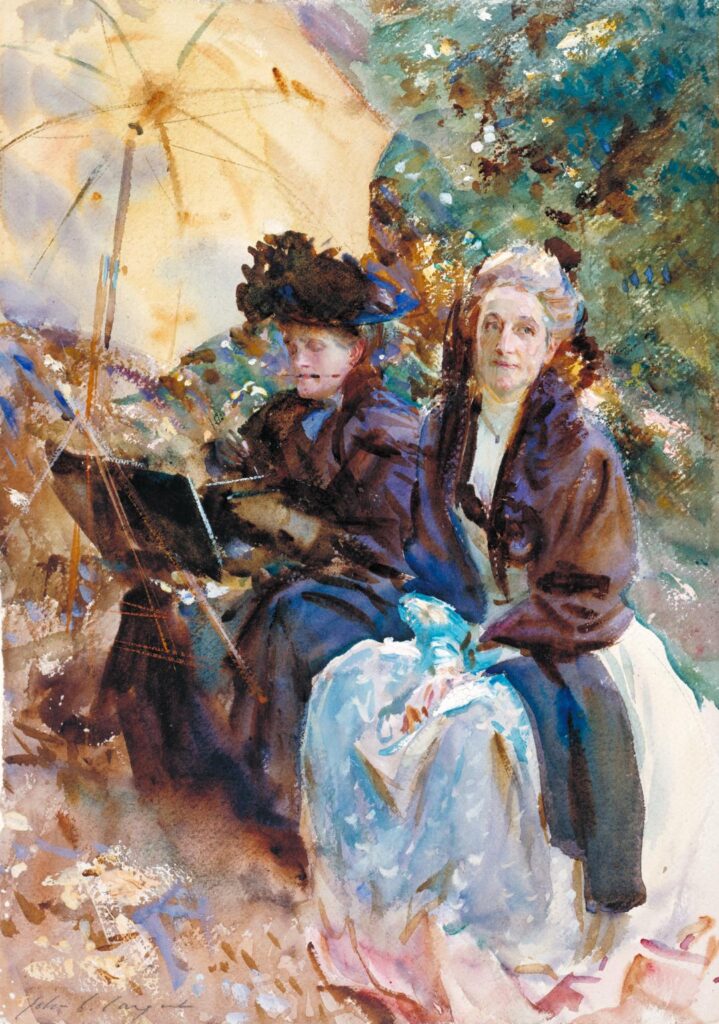
John Singer Sargent, Miss Eliza Wedgewood and Miss Sargent Sketching, 1908, Tate Britain. Museum Website.
Another painting, Mosquito Nets (1908), is an Impressionist-inspired snapshot featuring Sargent with the same companion, Eliza Wedgewood. The two friends read in a reclining pose, wearing nets around their heads—Emily’s invention for keeping mosquitos away on a holiday in Majorca, Spain.2
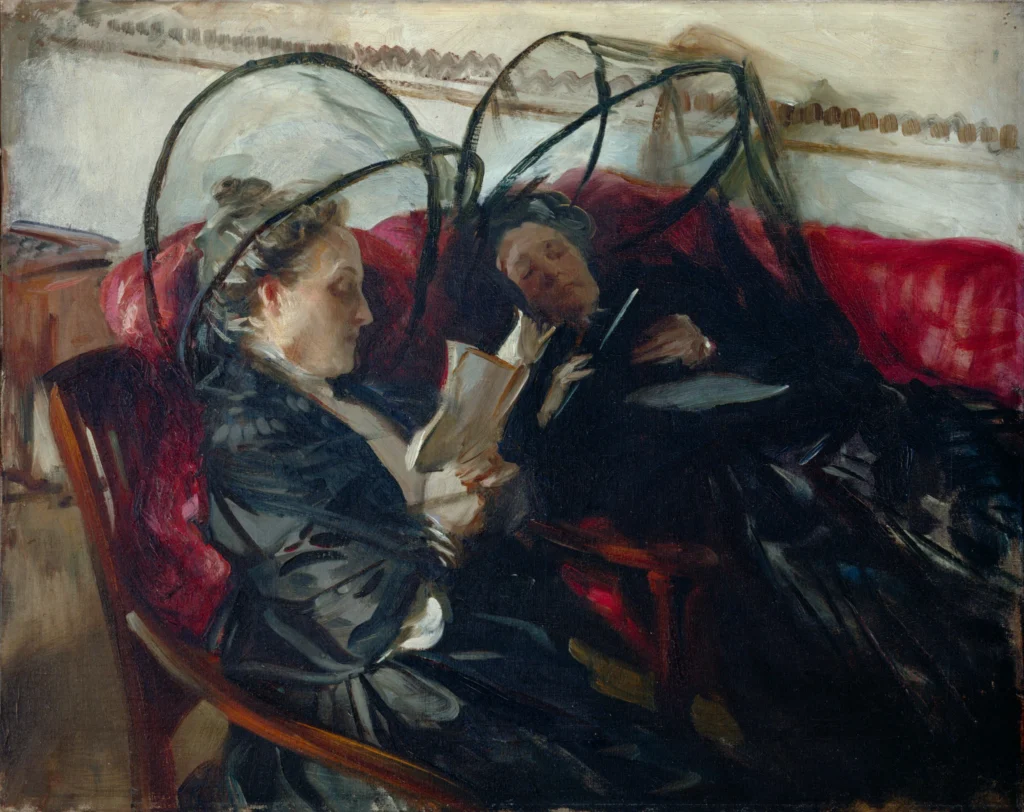
John Singer Sargent, Mosquito Nets, 1908. Detroit Institute of Arts. Museum Website.
Both John and Emily remained unmarried and maintained a close relationship throughout their lives. Sargent was a foremost promoter of her brother’s work, even helping to sell it to collectors. Following his death in 1925, Sargent went to live with her sister, Violet Ormond, in Tunisia. The sisters were joint heirs to their brother’s estate and donated much of his work to museums in the UK and the US. Emily Sargent continued to produce watercolors up until her death in 1936.
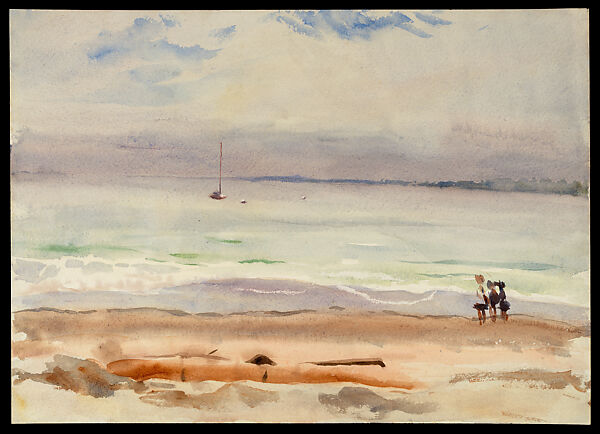
Emily Sargent, Sea with Boat & Figure, Pride’s Crossing, 1923. Metropolitan Museum of Art. Museum Website.
In 1998, a trunk containing hundreds of exquisitely preserved watercolors was found in the attic of a Sargent family home in England—they belonged to none other than Emily Sargent. Now, nearly twenty-five years later, the feat of bringing the artist out of the shadows has begun.
The Sargent family has donated many of these never-before-seen watercolors to a selection of museums around the world, the majority of which were gifted to Boston’s Museum of Fine Arts. The rest were distributed among the Tate, London, the National Gallery of Art in Washington, D.C. The Metropolitan Museum of Art, the Brooklyn Museum, the Ashmolean at Oxford University, as well as the Sargent House Museum in Gloucester, Massachusetts.
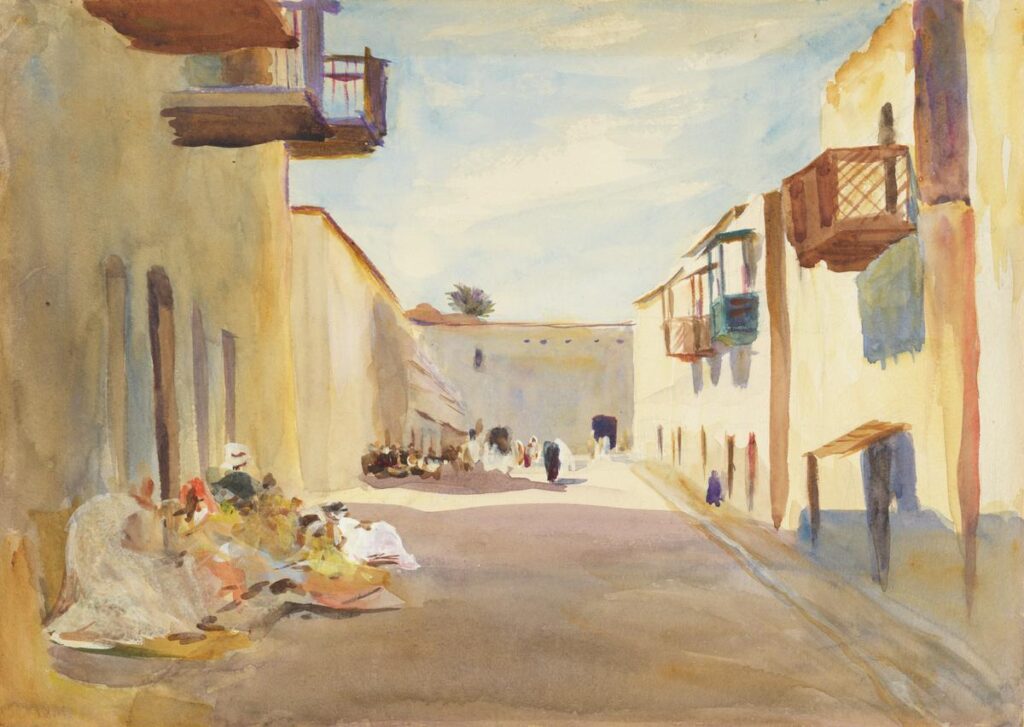
Emily Sargent, Arab Street Scene, c. 1885-1929. Tate Britain. Museum Website.
In 2022, the Cape Ann Museum honored Sargent in a small show dedicated to the watercolorist, Emily Sargent, A Glimpse of Her World, while in 2023, The Sargent House Museum presented Emily Sargent and Her World, an exhibition showcasing the artist’s watercolors as well as her letters from the family archives.
Once known as little more than the sister of American artist John Singer Sargent, Emily Sargent has finally begun relishing her own moment in the spotlight.
DailyArt Magazine needs your support. Every contribution, however big or small, is very valuable for our future. Thanks to it, we will be able to sustain and grow the Magazine. Thank you for your help!